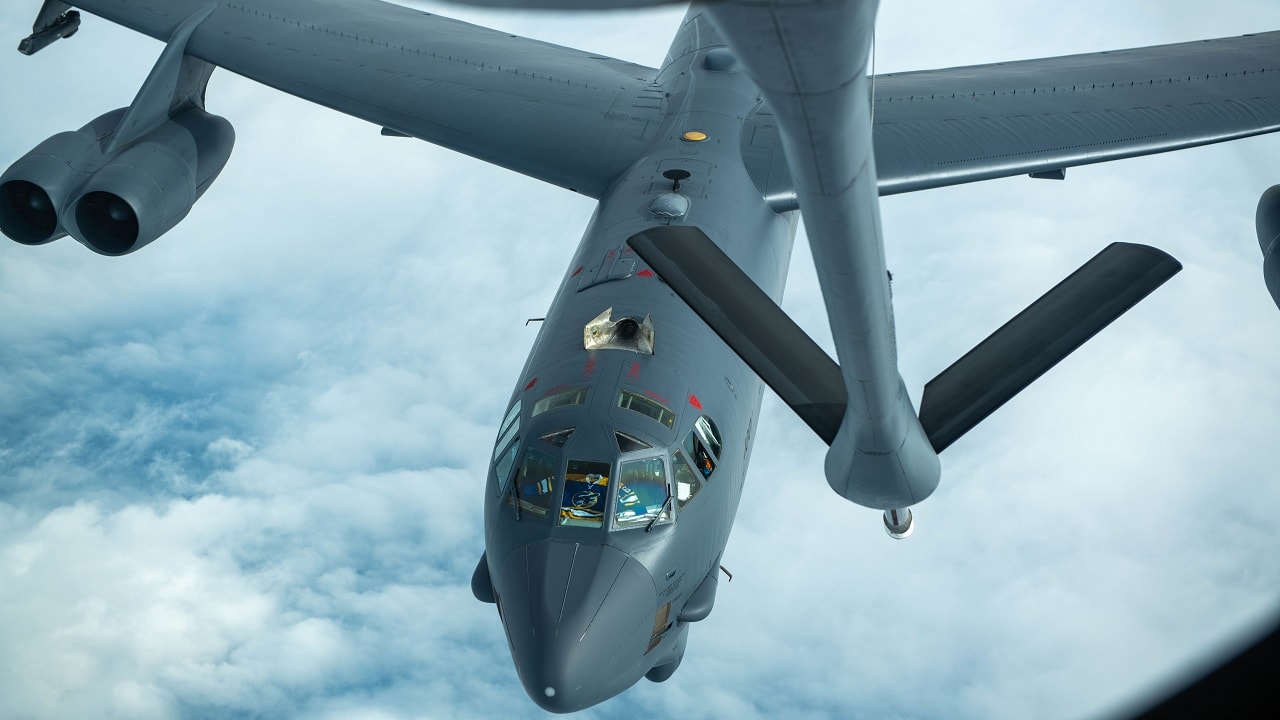Just when you think the B-52 bomber has seen better days, Boeing drags you back in. The defense giant has released a computer-generated rendering of what an updated B-52 will look like once it gets its new engines, the latest radar, and undergoes other cosmetic changes. These upgrades are some of the most substantial modifications in decades, and they will keep the B-52 in service until at least 2050. The question remains whether it is wise to put so much effort into a bomber whose mission set might nevertheless be substantially constrained compared to the past.
B-52: Getting Nosy
The Stratofortress will have a new, sleek appearance. Rolls-Royce F130 turbofans will propel this B-52 variant, which will be designated as the B-52J or B-52K. The four engine pods will be larger, with each containing two F130 powerplants. The new engines will be more fuel-efficient, will have new digital controls, and will require less maintenance. The updated B-52 will also cost less to fly.
Boeing went back to basics on the nose design. The latest B-52 models will have a rounded nose, and no fairings will sit beneath the bomber’s front. Those components previously housed the dated Electro-Optical Viewing System, with its forward-looking infrared apparatus and low-light-level television system. This set-up was used to facilitate flight at lower altitudes and to conduct intelligence, surveillance, and reconnaissance missions.
Now the nose will contain modern active electronically scanned array radars. This is the same sensor system used on the F/A-18E/F Super Hornet and EA-18G Growler, so Air Force and Navy interoperability will be improved. The new radar will help with situational awareness and longer-range target detection. Electronic warfare capabilities inherent in the system allow for jamming and other countermeasures.
What About Changes to Aerial Combat?
This is one of the biggest upgrade programs in the B-52’s history, and the changes are welcome. The old Pratt & Whitney TF-33 engines have powered the B-52 since 1962, and the new radar is a long-awaited addition.
Times have changed, though, and the B-52 probably won’t run the same kinds of missions it flew over Vietnam. Gone are the days when Operation Arc Light and Operation Linebacker dropped tons of bombs over North Vietnam. The B-52 is obviously not a stealth aircraft, and it would make a juicy target for newer surface-to-air missile systems such as the S-400 Triumf. Even in the skies, China and Russia have new fighters with stealth characteristics that could sneak into the B-52’s flight path to intercept it.
That means the B-52, even with all these upgrades, will be forced to take on a missile truck role – it will fire cruise missiles from a distance, rather than spending ample time over the target and dropping bombs. Its mission set could expand in situations where the Air Force and Navy entirely suppress enemy air defenses and establish air superiority. But future combat in Europe or the Indo-Pacific will differ from the global war on terror, and air superiority is not guaranteed. Serving as a missile truck is not a bad mission for the Stratofortress, and it gets even better if the jet can one day launch hypersonics. The B-52 is just a more limited airframe now. And I wonder if the money used for upgrades could have gone to a different bomber program, such as the new stealth B-21.
Can the ‘Big Ugly Fat Fella’ Survive?
All told, it remains to be seen how survivable this version of the B-52 will be in a potential conflict with Russia, China, North Korea, or Iran. The Air Force can still use the B-52 for a show of force, and the bombers have flown over North Korea before to send a message to Kim Jong Un. But such appearances may be rare in the coming decades. Launching stand-off missiles may be the B-52’s primary mission, and the Air Force may be just fine with that.
Bonus: B-52 Photo Essay
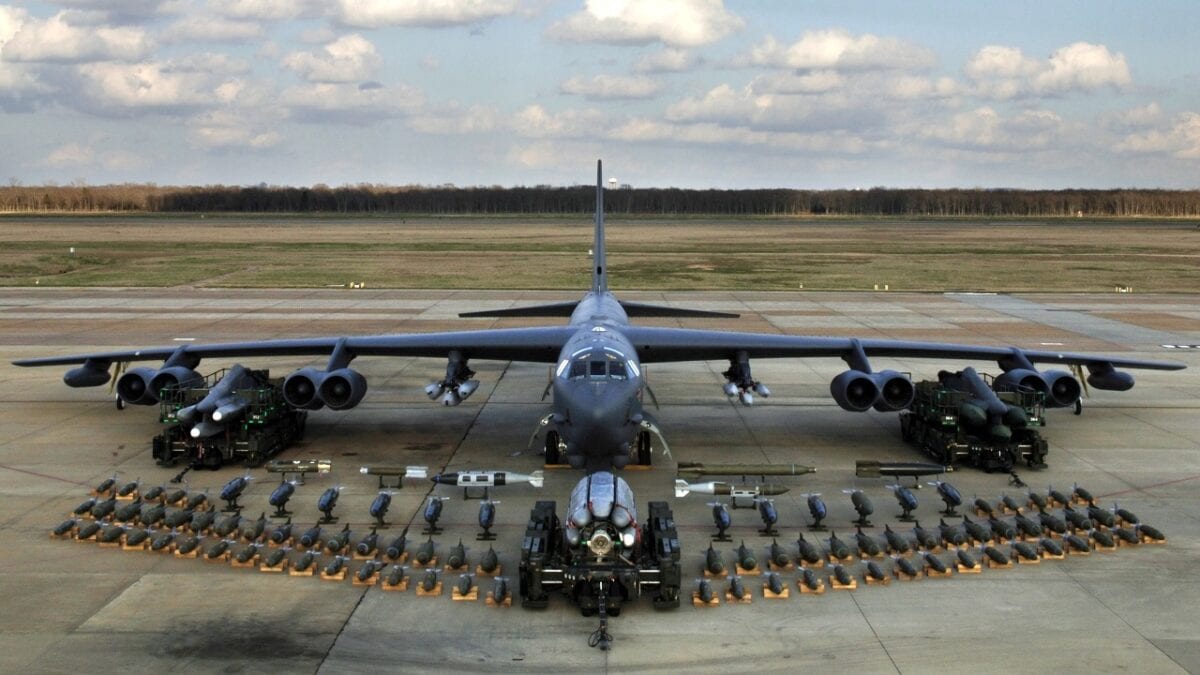
Boeing B-52H static display with weapons, Barksdale AFB 2006.

A U.S. Air Force B-52 Stratofortress assigned to the 2nd Bomb Wing departs after receiving fuel from a KC-135 Stratotanker, assigned to the 340th Expeditionary Air Refueling Squadron, during a multi-day Bomber Task Force mission over Southwest Asia, Dec. 10th, 2020. The B-52 is a long-range bomber with a range of approximately 8,800 miles, enabling rapid support of BTF missions or deployments and reinforcing global security and stability. (U.S Air Force photo by Staff Sgt. Trevor T. McBride)
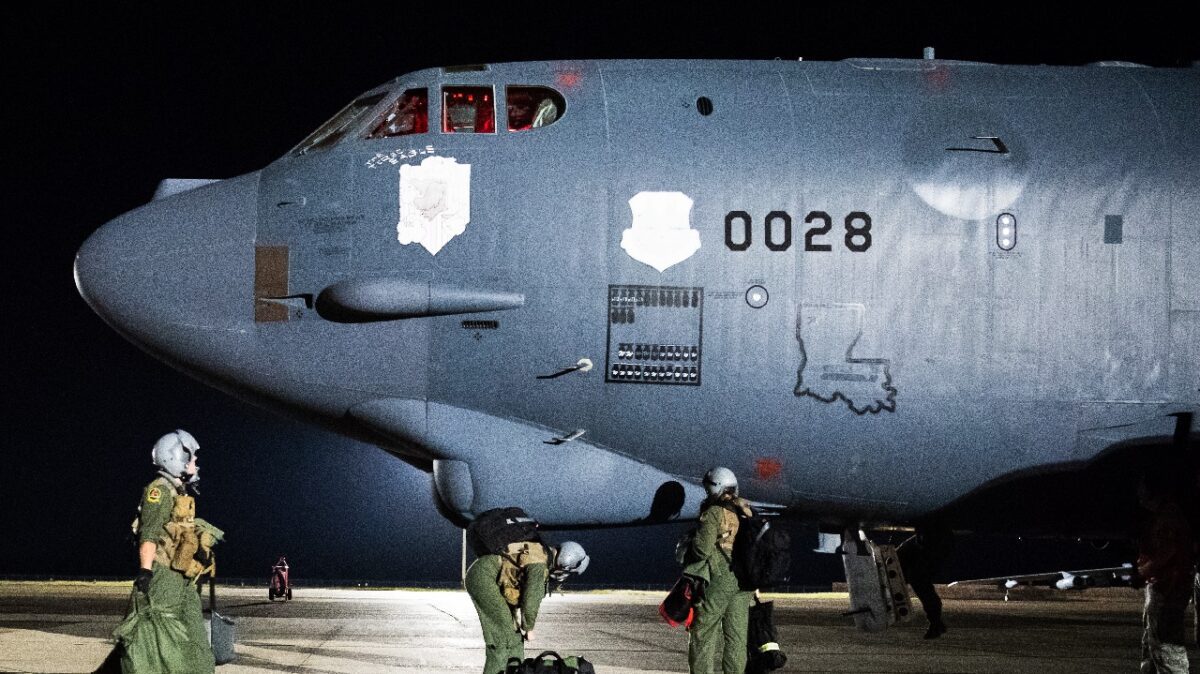
Airmen from the 96th Bomb Sqaudron load gear onto a B-52H Stratofortress at Barksdale Air Force Base, La., Oct. 13, 2020. The crew took part in a NATO crossover exercise designed to increase interoperability with NATO mission partners. (U.S. Air Force photo by Airman 1st Class Jacob B. Wrightsman)
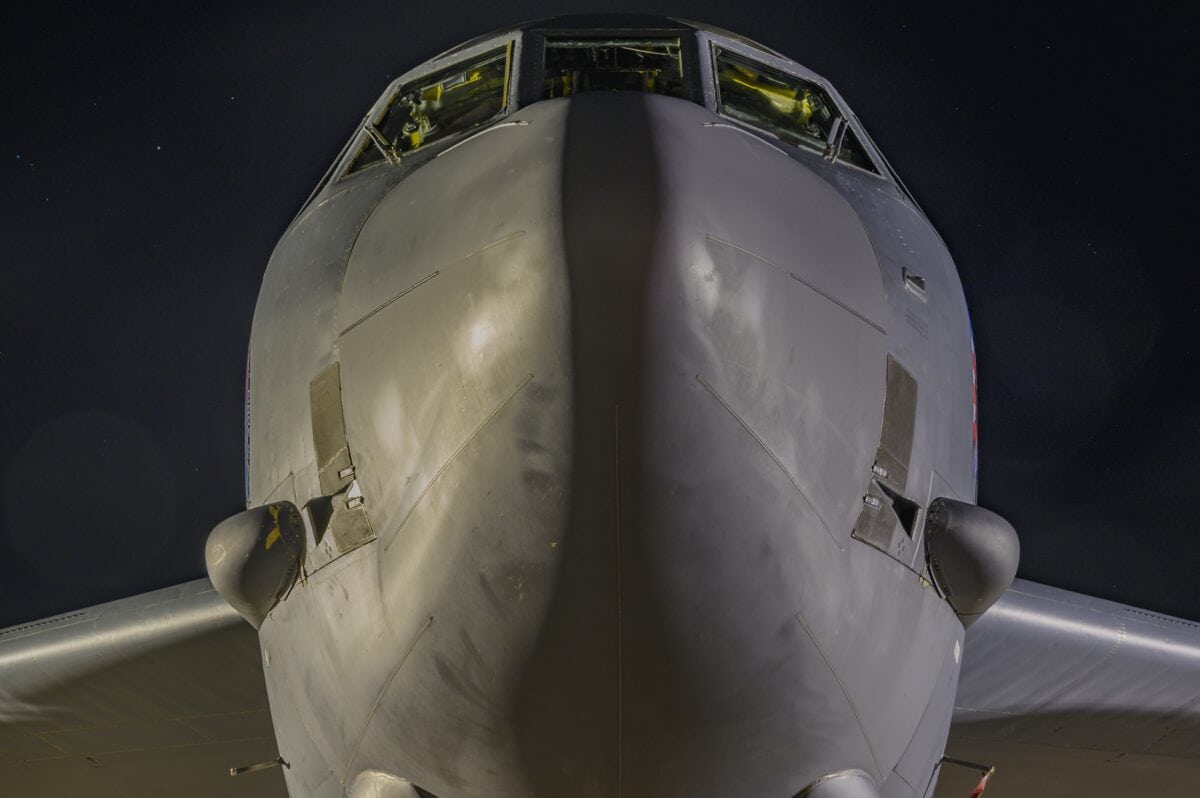
A U.S. Air Force B-52 Stratofortress assigned to Barksdale Air Force Base, La., is prepared for a Mark-82 munitions load, in support of a Bomber Task Force deployment, Feb. 1, 2020, at Andersen Air Force Base, Guam. The bomber deployment underscores the U.S. military’s commitment to regional security and demonstrates a unique ability to rapidly deploy on short notice. (U.S. Air Force photo by Senior Airman Jacob M. Thompson)
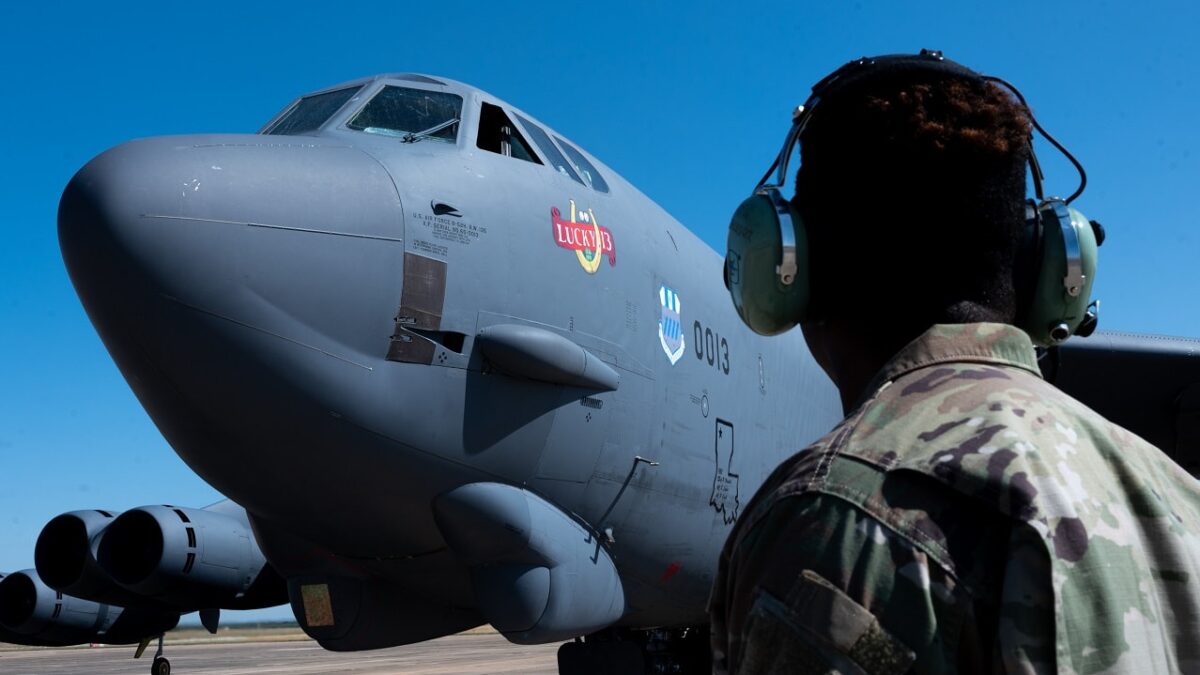
A U.S. Air Force maintainer conducts a visual inspection of a B-52H Stratofortress at Morón Air Base, Spain in support of Bomber Task Force 21-3, May 24, 2021. Strategic bomber missions enhance the readiness and training necessary to respond to any potential crisis or challenge across the globe. (U.S. Air Force photo by Staff Sgt. Jason Allred)
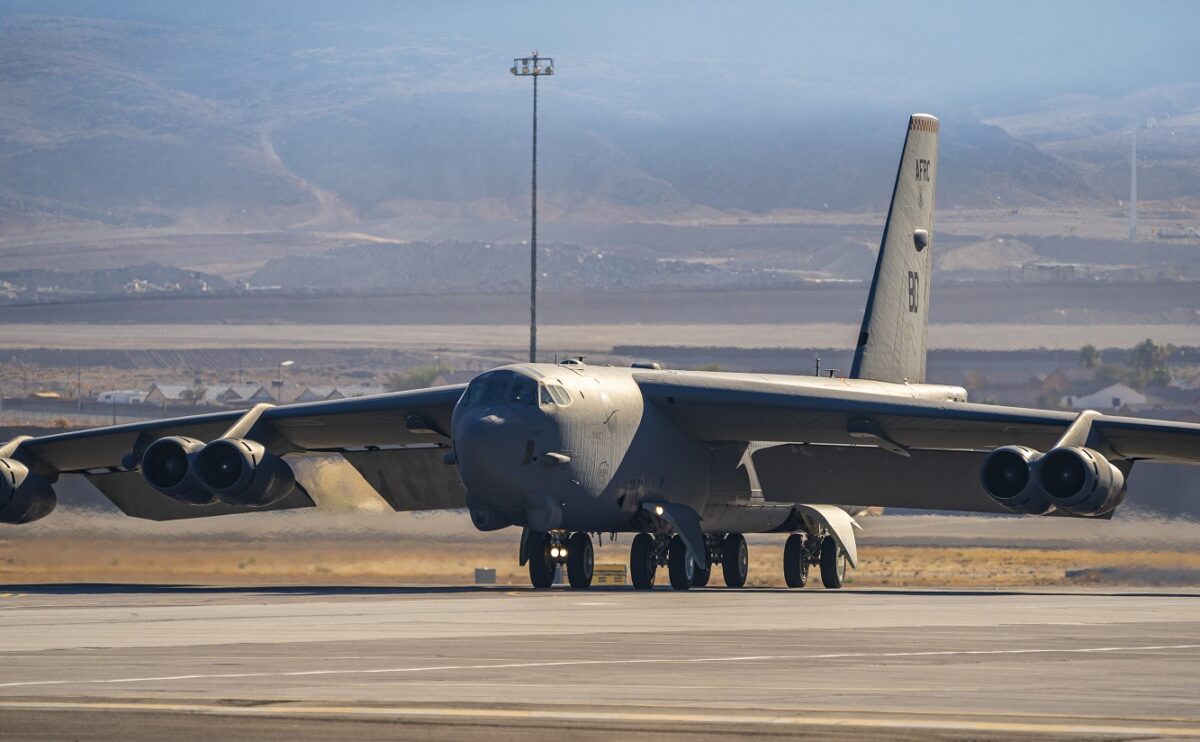
A B-52 Stratofortress bomber aircraft assigned to the 340th Weapons Squadron at Barksdale Air Force Base, Louisiana, taxis to take off during a U.S. Air Force Weapons School Integration exercise at Nellis AFB, Nevada, Nov. 30, 2021. The U.S. Air Force Weapons School teaches graduate-level instructor courses that provide advanced training in weapons and tactics employment to officers and enlisted specialists of the combat and mobility air forces. (U.S. Air Force photo by William Lewis)
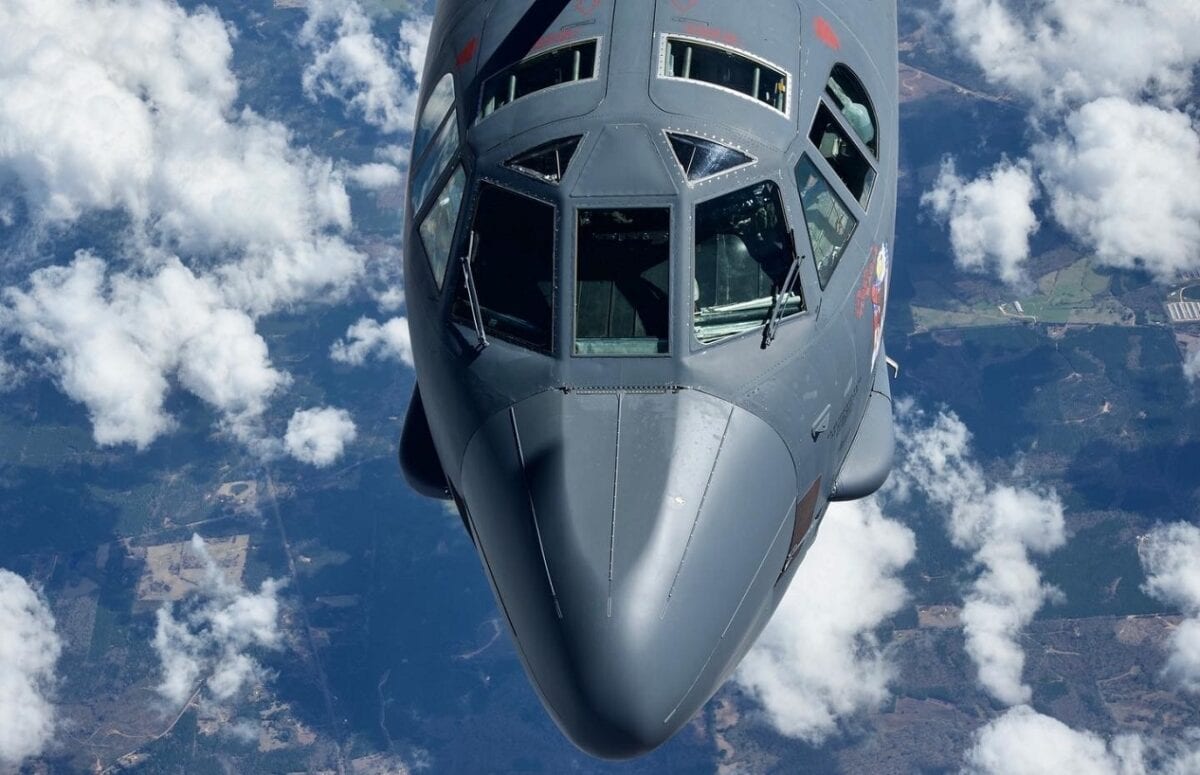
A U.S. Air Force KC-135 Stratotanker with the 927th Air Refueling Wing, Florida refuels a B-52 Stratofortress with the Barksdale Air Force Base, Louisiana, on February 26, 2021. On this mission there were two Stratotankers that refueled three Stratofortresses. (U.S. Air Force photo by Tiffany A. Emery)
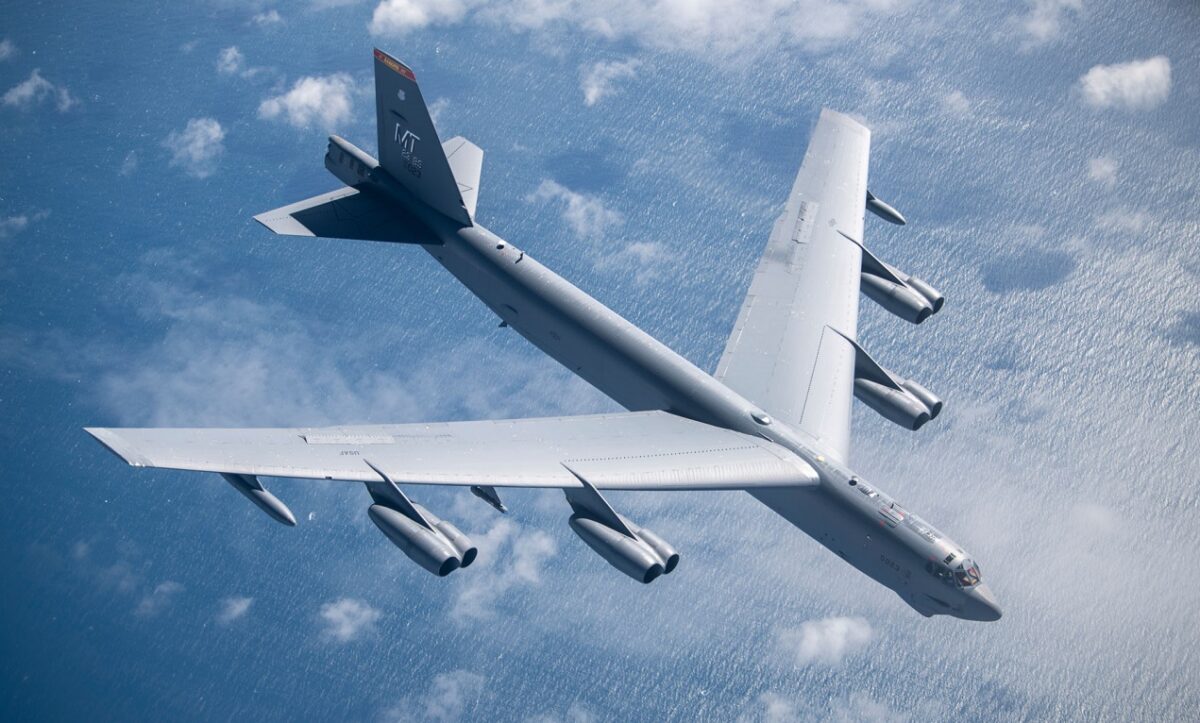
B-52 Bomber. Image Credit: US Air Force.
Expert Biography: Serving as 1945’s Defense and National Security Editor, Dr. Brent M. Eastwood is the author of Humans, Machines, and Data: Future Trends in Warfare. He is an Emerging Threats expert and former U.S. Army Infantry officer. You can follow him on Twitter @BMEastwood. He holds a Ph.D. in Political Science and Foreign Policy/ International Relations.

